Check out the 22 unmanned aerial vehicles (UAVs) engineered and developed in the United States that played significant roles in and changed the battlefield in the twenty-first century (sorted by official service year).
1. AAI MQ-19 Aerosonde (2001)
The AAI Aerosonde took to the skies at the turn of the century after a successful development in the late 1990s. This small-class UAV, dubbed “Lalma,” is the first to cross the Atlantic Ocean in less than 27 hours autonomously.
It measures 1.70 m in length, 2.90 m in span, and 0.60 m in height. It has a top speed of 140 kph and a range of up to 3,000 km thanks to a single Aerosonde K-twin engine in pusher configuration.
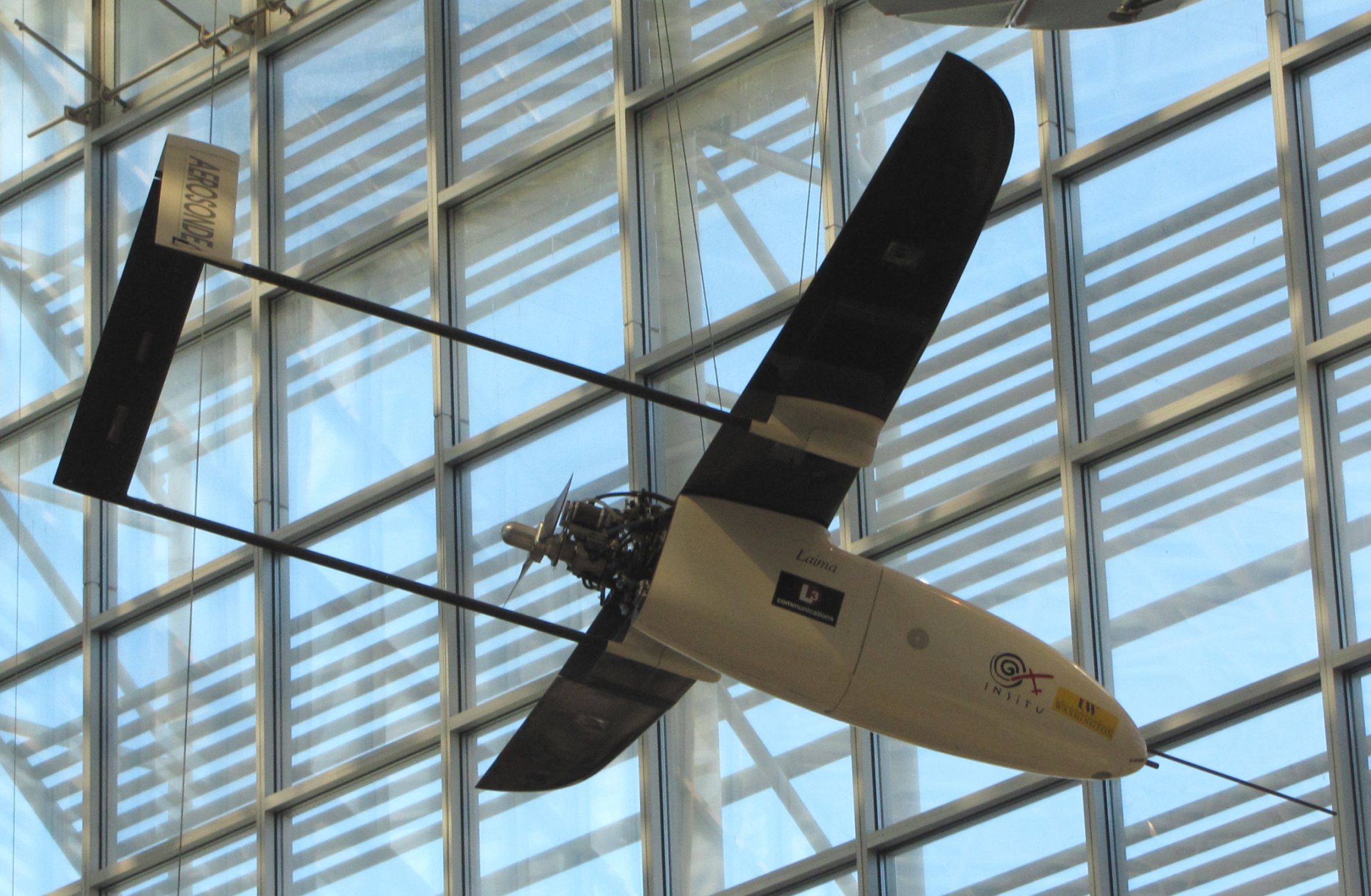
This UAV was originally designed to collect meteorological data, but it has since evolved into an ISR in the hands of the US Armed Forces. The most recent version, the Mark 4.7, has been upgraded by the American military and now includes new features such as automated launch and recovery, an integrated data link facility, and a NATO-compliant design.
2. Northrop Grumman RQ-4 “Global Hawk” (2001)
The Northrop Grumman RQ-4, aka “Global Hawk,” is one of the US Air Force and Navy’s cutting-edge large-scale UAVs; ground commanders and strategic planners can depend on its capability for extensive surveillance during ISR missions because of its high altitude, long-endurance performance.
The Global Hawk measures 13.40 m in length, 35.30 m in span, and 4.60 m in height. When empty, it weighs around 3,850 kg and has a top speed of 650 kph, powered by an Allison Rolls-Royce turbofan engine. It has “an internal sensory suite.” It can communicate with sources on the ground via a satellite-managed data link, allowing for the “full transference of information” in video or pictures. This protects allied pilots from enemy threats and inclement weather.
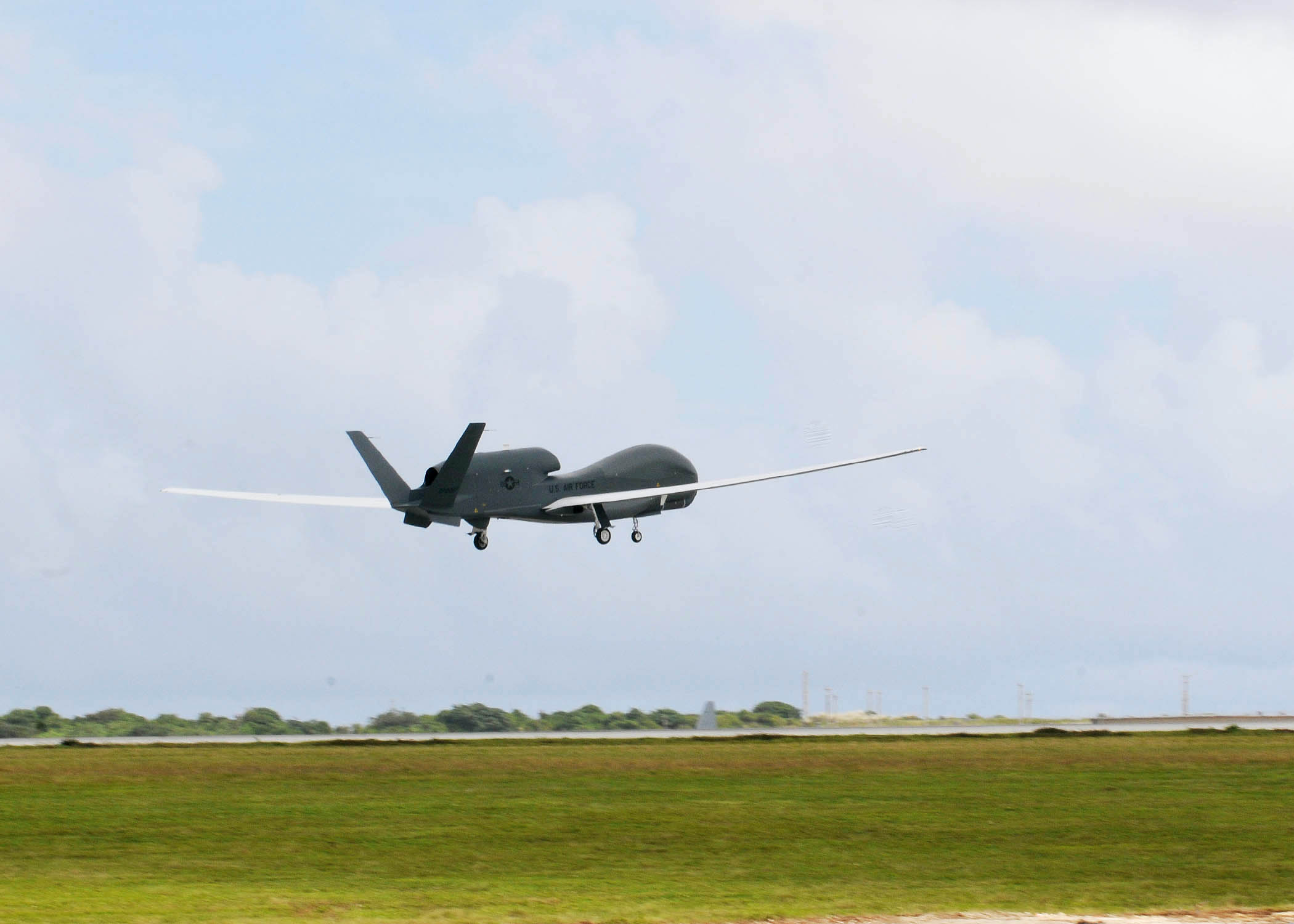
Like the AAI Aerosonde, Global Hawk also holds an aviation first title as the first UAV to fly across the Pacific Ocean during its flight from Edwards AFB, US, to RAAF Base Edinburg, Australia, in 2001.
3. AAI (Textron) RQ-7 “Shadow” (2002)
The RQ-7 Shadow, another AAI UAV, played an essential role in the early 2000s US military campaigns in Afghanistan and Iraq. Its responsibilities include providing ground commanders with a real-time “bird’s eye view” during ISR missions and delivering and dropping medical supplies to needing ground units. It does not, however, have the ability to operate independently and requires the rest of its system components to function, which takes a little too much time to prepare.
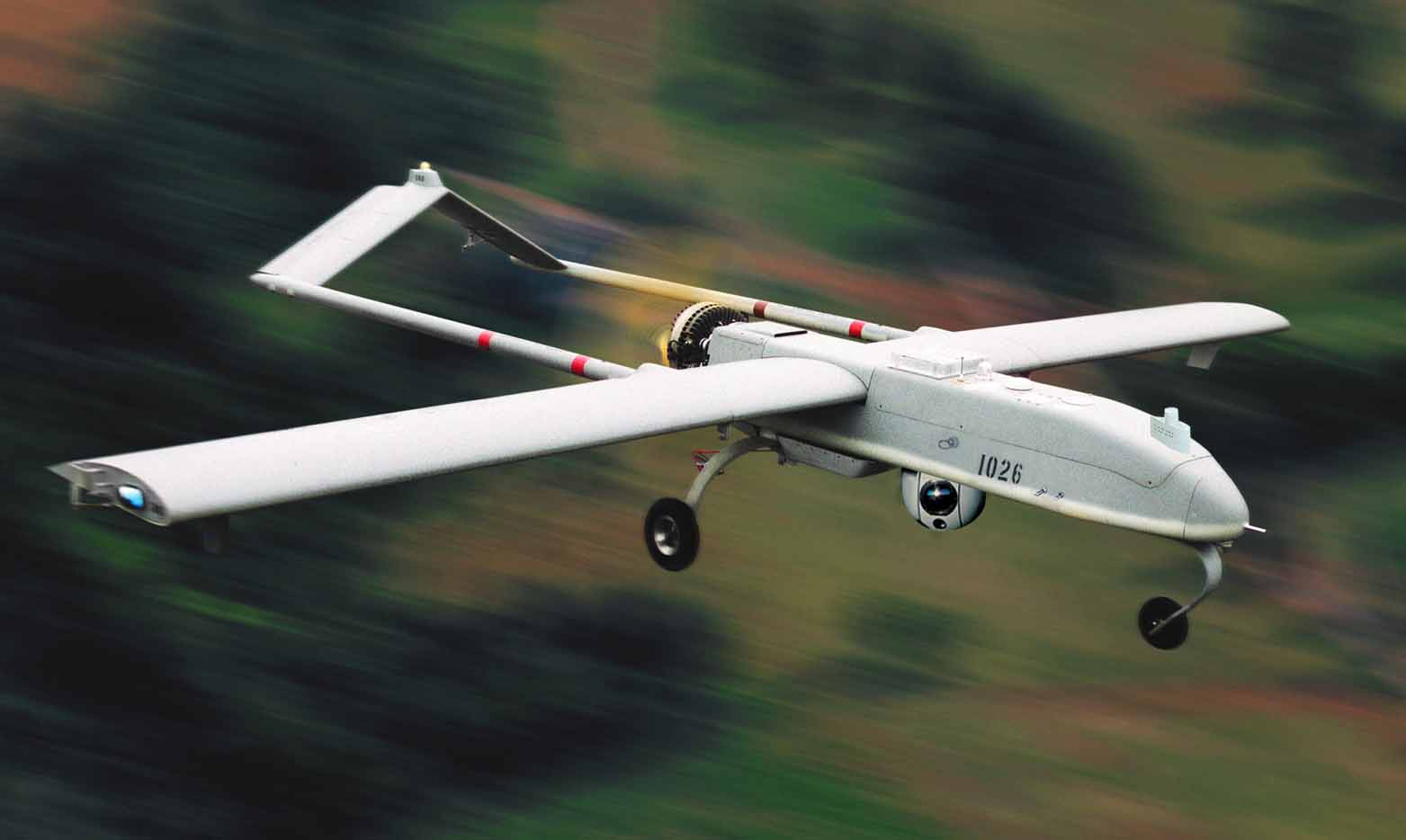
It has an overall length of 3.40 m, a span of 3.90 m, and a height of 1 m. It is powered by a UEL AR-741 208cc rotary piston engine with a maximum power output of 38 horsepower. It also has a driving two-bladed propeller unit in a pusher configuration, allowing it to reach a top speed of 207 km/h and a range of 735 km.
4. AeroVironment RQ-14 “Dragon Eye” (2002)
This tactical reconnaissance UAV dubbed the “Dragon Eye,” has served as the Marines’ “critical eye-in-the-sky,” most notably in Afghanistan in 2005. While it must be launched by hand, it does not require a complex catapulting system and can traverse autonomously once it is up in the air via a waypoint-based navigation system. In addition, the extremely quiet humming of its engine provides an advantage to its operators, masking its presence from enemy detection and thus making it a viable alternative to larger, more expensive UAV systems.
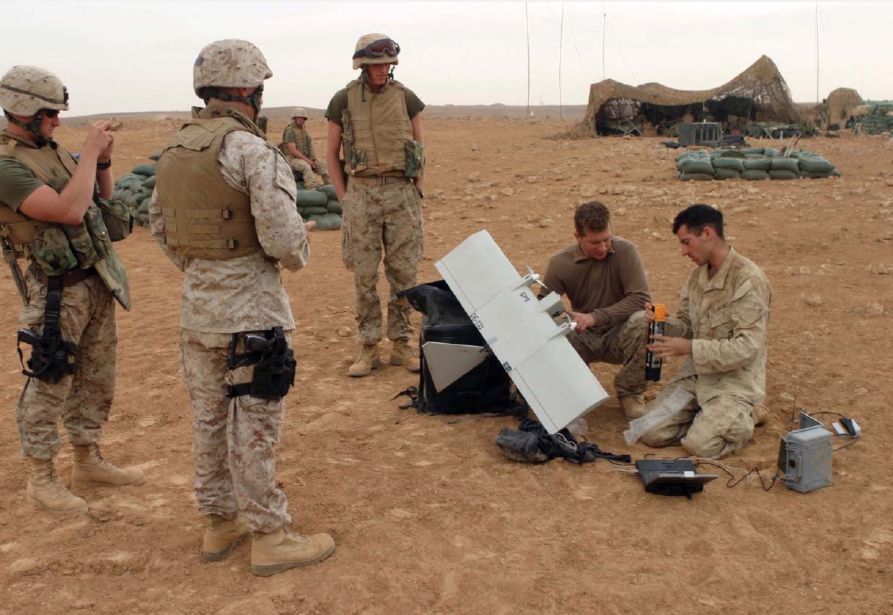
The Dragon Eye is 0.90 m long, 1.10 m wide, and powered by a single-use battery pack with a max speed of 35 kph and a range of 5 km.
5. AeroVironment RQ-11 “Raven” (2003)
The RQ-11 “Raven,” another UAV designed by AeroVironment, has a production run of over 13,000 units flown by global operators. It was conceived based on a private venture called “FQM-151 Pointer” in the late 1990s and eventually ended up in the hands of the US Army and USMC.
Like the other UAVs on this list, the Raven is used for ISR missions and scouting for targets of interest, most notably during the Afghanistan and Iraq campaigns, delivering real-time battlefield information for the US Special Forces US Army and US Air Force.

The Raven has a total length of 0.90 m and a width of 1.38 m, with a top speed of 56 kph and a range of 10 km. It has an aircraft’s traditional design but a much more compact size. It is also a hand-launched operation, with a member manually launching the aircraft nose-first into the air. It can also operate day and night thanks to its daytime and infrared camera systems, and it can be controlled by a ground-based operator or guided by waypoints. Despite its 10 km line-of-sight operation, its video feed can be transmitted in real-time and full color. It also has an “autoland” function that allows for recovery and reuse.
Today, small-scale UAVs are being piloted by forces worldwide, including Australia, Denmark, Iraq, Spain, and the United Kingdom, to name a few. During the Somalian insurgents’ attack, the African Union countries of Burundi and Uganda received and operated a fleet.
6. Griffon Aerospace MQM-170 “Outlaw” (2004)
The MQM-170 Outlaw is a low-cost UAV primarily used for air defense training. Griffon Aerospace introduced the training drone in the summer of 2004 and reached the 3,000 production mark in 2012.

It can launch in two ways: by a pneumatic catapult system or conventional runway takeoff and landing. The training UAV measures around 2.70 m in length and 4.15 m in span, with an empty weight of 54 kg. Meanwhile, it is powered by a single 3W model 150i two-cylinder piston engine at a maximum speed of 195 kph and a range of up to 220 km.
7. Boeing Insitu “ScanEagle” (2005)
With over 10,000 flight hours under its belt, the ScanEagle drone proved its dominance over the skies of Afghanistan and Iraq in the early-to-mid-2000s. This reconnaissance drone can track specific targets in addition to performing ISR and can endure over 28 hours of flight time. It can be outfitted with either infrared or electro-optical cameras. Regarding launching, it uses a catapult system and a “skyhook” approach for its landing.
The ScanEagle has an overall length of 1.20 m and a span of 3.05 m, and it is powered by a single Orbital 3W 2-stroke piston engine that produces 1.5 horsepower while driving a two-bladed pusher propeller. In good condition, it can reach 148 km/h and range 550 km.

Unfortunately, several Boeing ScanEagle drones were captured by Iranian insurgents and reverse-engineered by the Islamic nation, resulting in illegitimate mass production. Nonetheless, the reconnaissance drone’s manufacturer, which is now part of the US Coast Guard, continued to improve it. In April 2018, the ScanEagle was announced as the department’s standard small UA system to be carried on National Security Cutter vessels.
8. General Atomics “Guardian” (2006)
The Guardian is a specially modified MQ-9 Reaper that operates for the US Customers and Border Protection Agency. It has a similar appearance to its Reaper counterparts except for its special extension along the belly portion of the UAV and the additional mainplane tips on its winglets. It has only two known unit production. One is assigned to Canaveral Air Force Station in Florida and the other to the Naval Air Station Corpus Christi in Texas.
The maritime patrol UAV is approximately 11 meters long, 20 meters wide, and 3.60 meters tall. Like the Reaper series, it is powered by a conventional engine system, Honeywell Turboprop, and has a top speed of 480 kph.
9. Lockheed Martin “Desert Hawk III” (2006)
The Desert Hawk III from Lockheed Martin is significantly more extensive and lighter than the original Desert Hawk UAV series, which debuted in the early 2000s. This UAV series has dramatically impacted the Afghanistan war, particularly under the British Army operations. Desert Hawk III is an improved series version, with increased time endurance and a lower price than its predecessors. Like most of the UAVs on this list, it is hand-launched by an operating crew and then controlled by a briefcase-style ground controller.
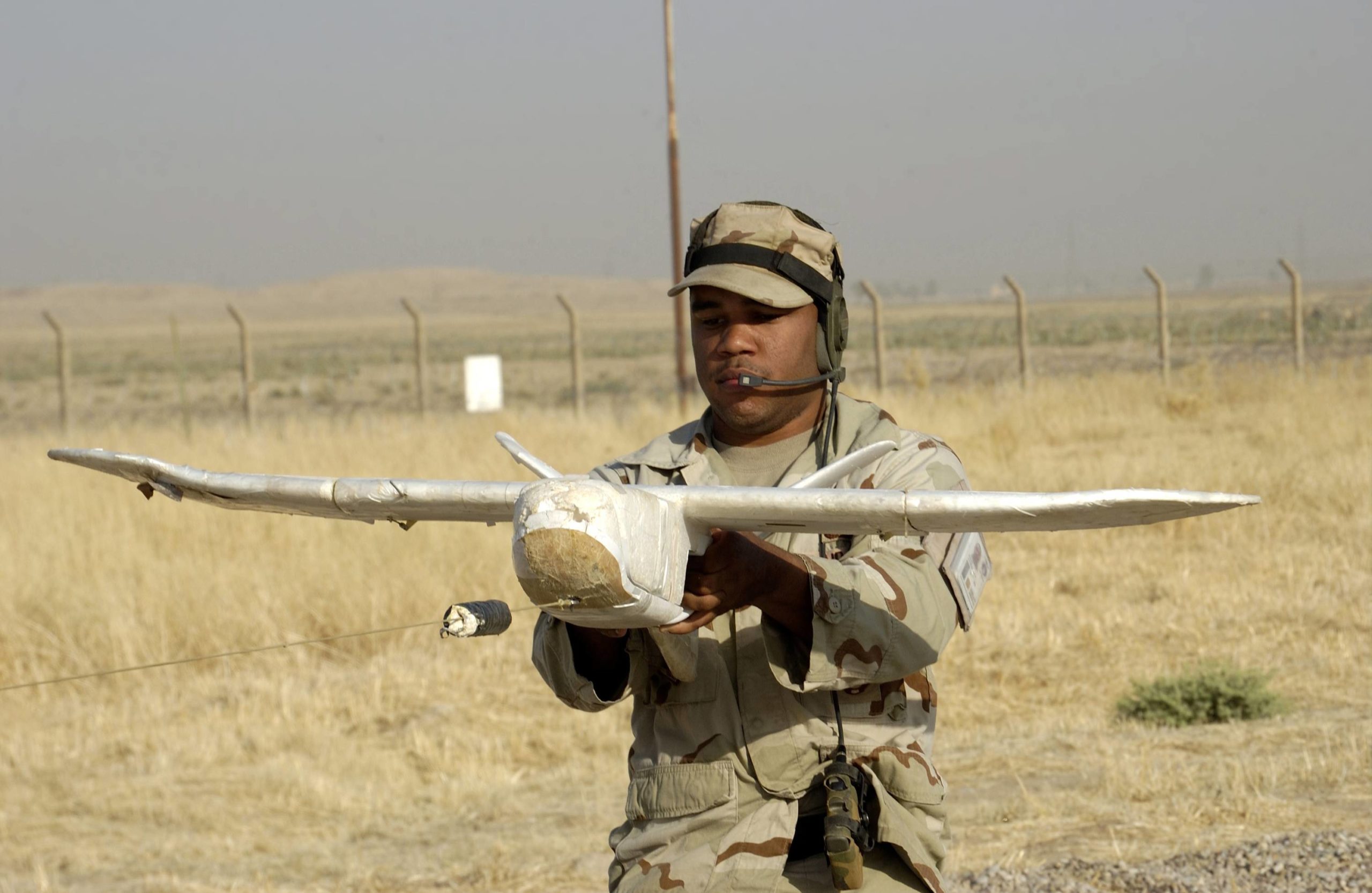
Though the Desert Hawk III appeared with the American forces, it mainly functioned with the UK forces and, at some point, made up nearly half of the latter’s UAV inventory.
This UAV has a wing span of 1.37 meters and is powered by a single electric engine with a range of 15 kilometers and a top speed of 90 kph.
10. Lockheed Martin “Stalker” (2006)
Lockheed’s Stalker is a highly portable, electrically powered UAV that has also seen combat action in Afghanistan, primarily in the hands of US Special Forces. The Stalker, which has a total wing span of 3 m, has excellent ISR capabilities and the ability to perform search and rescue missions and close-air support.
Depending on the variant, the Stalker can be launched in two ways: (1) by vertical takeoff and landing and (2) by hand-held launch from a bungee or rail. Its equipped camera enables the UAV to provide full pan, tilt, and zoom functionality. It also supports Electro-Optical, Infrared, and low-light camera sets, making it ideal for searching and tracking ground targets in any weather or time of day. In addition, the speed of the Stalker can vary between 60-80 kph and reach up to 650 km.
11. NavMar “TigerShark” (2006)
NavMar Applied Sciences Corporation submitted its UAV entry, which would join military forces in Afghanistan in the mid-2000s. The TigerShark, its original variant, has a wingspan of about 6.70 m, an overall length of 4.55 m, and the necessary ISR mission equipment such as cameras and sensors. It can fly for about 4,265 meters in a range of 715 kilometers because it is a medium altitude, long endurance UAV. Its Herbrandson 2-stroke engine propels it to a top speed of 120 kilometers per hour. Aside from serving the military and being consumed by UAV enthusiasts, the TigerShark is also modified to cater to student UAV flight training.
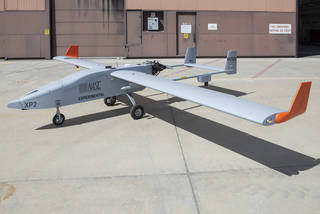
12. Northrop Grumman “Bat” (2006)
The “Bat” is one of many UAV types developed by Northrop Grumman in its efforts to create a low-cost reconnaissance tactical UAV. It was marketed as a multi-mission, medium-altitude, tactical level UAV that could be used in both “warfare and peacetime” scenarios. Following its launch, the Bat was commissioned and served in Afghanistan in support of ISR missions in the mid-2000s.
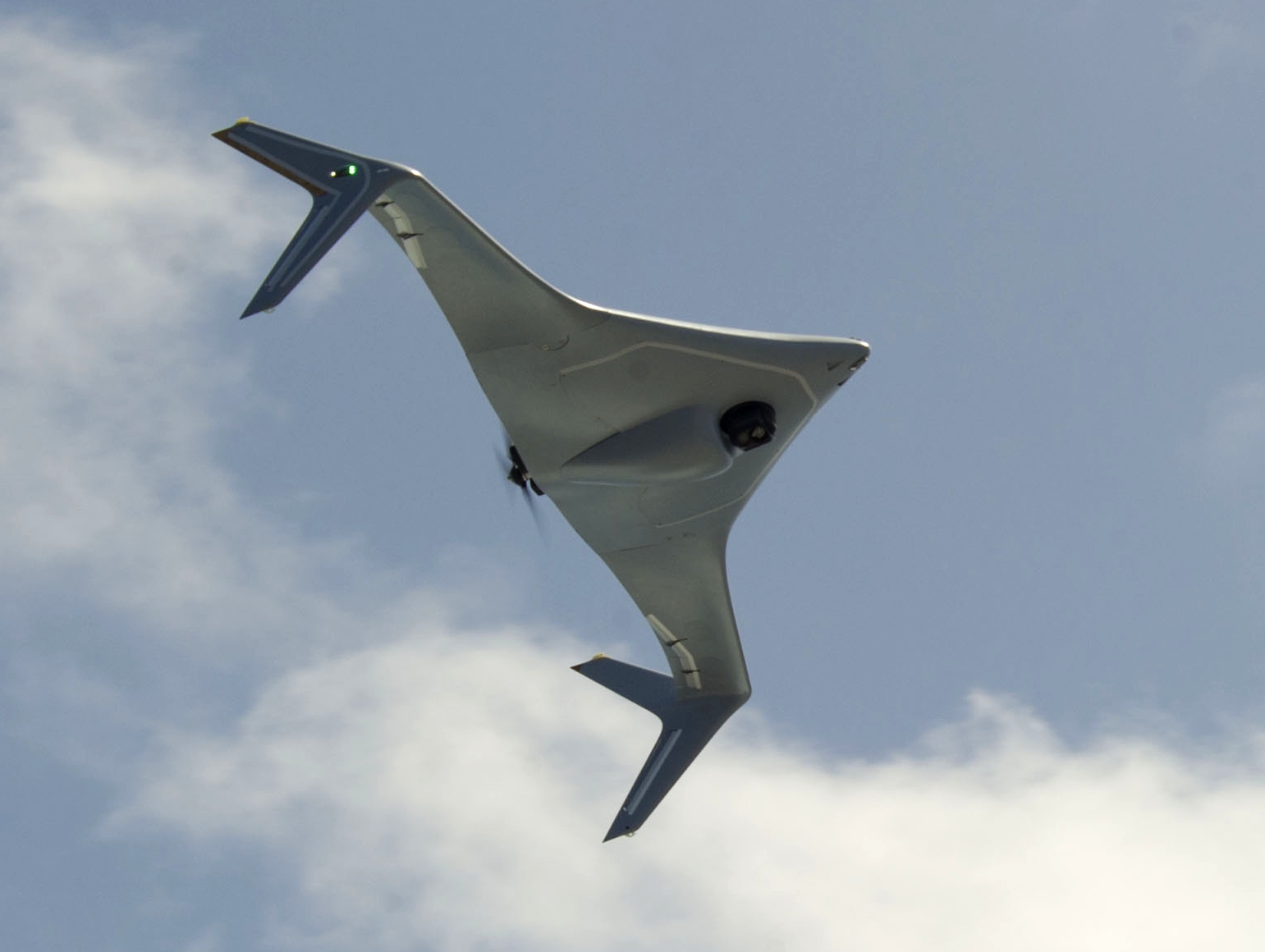
Because of its compact design, the Bat can be transported by air in the belly of a Lockheed C-130, a Bell-Boeing MV-22, or by ground via a HUMVEE. To give you an idea of its size, the tactical UAV is only about 2 meters long, has a wingspan of 4.26 meters, and stands 0.91 meters tall. Nonetheless, thanks to its engine’s five-bladed driving propeller, it can soar through the air at a maximum speed of 170 kph and reach a range of up to 3,000 km.
The Bat is currently under development to expand its multi-mission capabilities, such as ISR, maritime surveillance, and SAR. When necessary, it can also operate completely autonomously.
13. Prox Dynamics “Black Hornet” Nano (2006)
The future of the UAV has already been glimpsed as early as 2006, with the introduction of Prox Dynamics’ Black Hornet Nano. It’s barely the size of a child’s fist, giving it a much lower profile than other small UAVs.

The nano drone’s main goal is to scout for intelligence and surveillance, and if adversaries aren’t vigilant enough, this could easily slip past hostile territories. It has the appearance of a small helicopter rather than an airplane, and it can spy on enemies using a small camera feed that transmits wirelessly to a hand-held terminal device in real-time. Since its introduction, the manufacturer has successfully delivered at least 200 units, most of which are used in the United Kingdom.
14. AeroVironment RQ-12A “Wasp III” (2007)
The RQ-12A, also known as “Wasp III,” is AeroVironment’s miniature UAV version developed in 2007 for US Air Force special operations. This small, lightweight aircraft is the force’s “sneaky eyes,” equipped with wide-angle cameras that transmit real-time feed. It also has a GPS and an inertial navigation system, allowing it to operate autonomously from takeoff to landing.
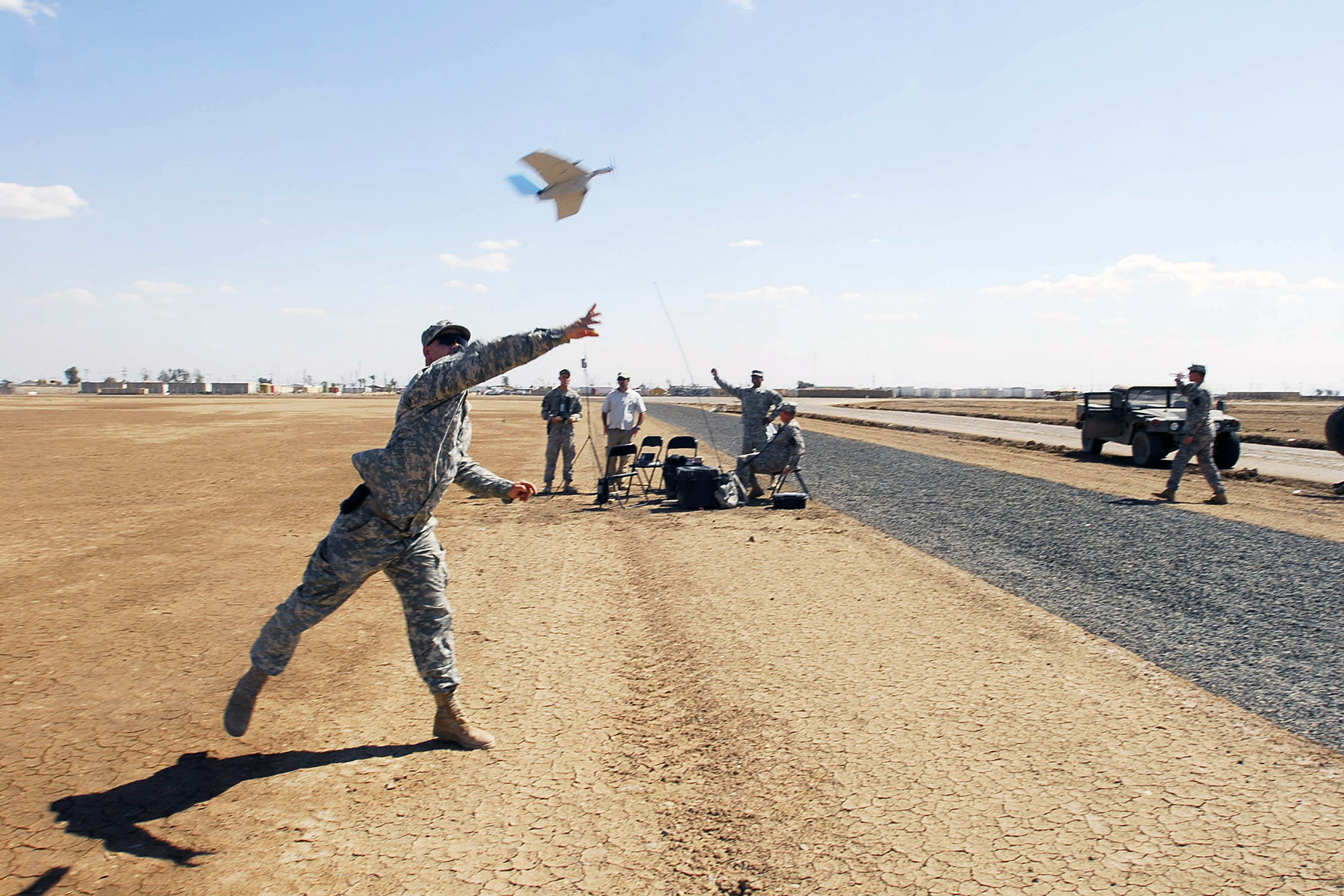
The Wasp III has a length of just over a meter (0.38 m) and a width of 0.72 m. It is powered by a rechargeable ion battery and has a maximum speed of 65 kph and a range of 5 km.
15. General Atomics MQ-9 “Reaper, Predator B” (2007)
General Atomics MQ-9 Reaper, the most visible UAV on the list, is America’s hunter-killer, armed with AGM-114 Hellfire anti-tank missiles, GBU-12 Joint Direct Attack Munitions (JDAM), and GBU-38 JDAM. It is praised for its high-level, remotely piloted weapons that can act instantly and precisely. Also known as “Predator B,” this hunter/killer UAV is the evolution of the MQ-1 “Predator,” and has contributed significantly to the US forces’ campaigns in Afghanistan and Iraq as it can perform both ISR and ground attacks. It has an overall length of 11 m, a wingspan of 20.10 m, and a height of around 3.81 m. Predator B weighs approximately 1,680 kg without its munitions and more than 4,700 kg with munitions. It has a Honeywell turboprop engine that produces up to 900 horsepower, achieving a max speed of 370 kph and a range of about 3,022 km.
16. Lockheed Martin RQ-170 “Sentinel” (2007)
Another state-of-the-art UAV product from Lockheed Martin, the RQ-170 “Sentinel,” is said to boast a “low observable” UAS, emphasizing its advances in stealth to perform reconnaissance and enemy surveillance missions at medium altitudes. However, unlike the other UAVs produced by Lockheed, the details about the Sentinel are held confidential.
Since its launch in 2007, it has conducted several successful ISR missions, including “the pursuit of 9/11 mastermind Osama Bin Laden.” The Sentinel was reportedly on standby around a Pakistani town when it spotted the infamous terror fugitive who was later tracked and killed.
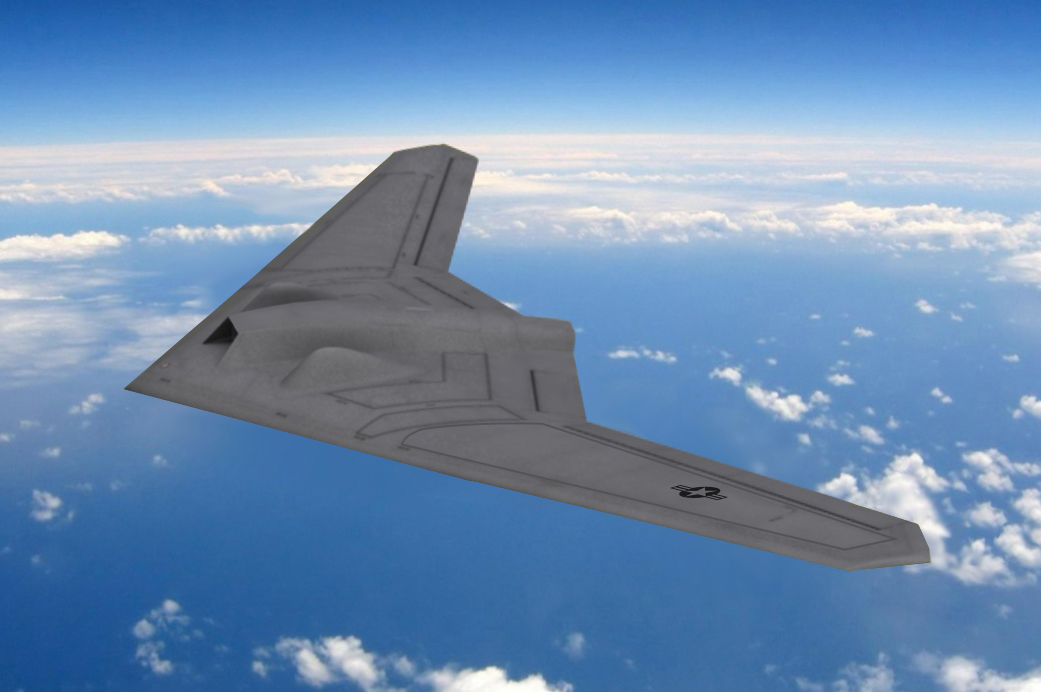
The Sentinel has an overall length of 4.50 m, a wingspan of 26 m, and a height of 1.84 m and is speculated to be powered by a single general electric turbofan engine that can soar over 49,000 ft.
17. AeroVironment RQ-20 “Puma” (2008)
An electric powerplant-powered UAV, the RQ-20 “Puma,” is another hand-launched type made by AeroVironment that focuses on ISR missions using electronic-optical and infrared cameras. The small reconnaissance aircraft was first selected for the US Special Operations Command in 2008 before being ordered by the US Army, Marine Corps, and Air Force four years later. Moreover, it was one of the first UAVs certified by the Federal Aviation Administration (FAA) to fly commercially in US airspace in 2013.
The Puma features an overall length of 1.40 m with a wingspan of 2.80 m, a max speed of 83 kph, and a range of 15 km. It also offers a cost-effective alternative compared to its Predator and Reaper counterparts.
18. Honeywell RQ-16 T-Hawk “Tarantula Hawk” (2008)
Probably the odd one looking at the list is Honeywell’s RQ-16 T-Hawk—also known as the “Tarantula Hawk”—is a Vertical Takeoff and Landing (VTOL) micro air vehicle (MAV) specifically made suitable for one-man, backpack deployment. Its design is purposely made to allow the aircraft to be operated in “confined, open-air spaces.” Since it launched, the Tarantula Hawk has provided an advantage when inspecting targets from a close distance without putting people in danger.

Its most notable missions were the surveillance trials in Iraq and Afghanistan. It proved its effectiveness when it provided a close-up view of the Fukushima Dai-Ichi nuclear reactor weeks after Japan’s 2011 massive earthquake and tsunami.
19. Kratos BQM-167 “Skeeter” (2008)
In 2008, Kratos reinvented the BQM-167 “Skeeter” training drone —an original product of Composite Engineering, Inc. before Kratos procured it—for the US Air Force, which included active and responsive systems. It was later modified to have the “fighter-like” characteristics of 4th Generation Fighter mounts. The Skeeter’s initial model form has an overall length of 6.10 m, a wingspan of 3.40 m, and a height of 1.20 m. The UAV’s power source is a single turbojet engine, which allows the aircraft to reach a top speed of 1,111 kph and soar up to 49,213 ft.
20. Arcturus T-20 (2009)
The Arcturus T-20 is a reusable medium-range UAV initially developed as a private venture. It has advanced sensors, cameras, and other essential equipment for carrying out ISR missions and sports an exterior design similar to a conventional aircraft, with the airframe made primarily of composites. The UAV also has integrated electro-optical, infrared, and target laser systems and a GPS-based autopilot for autonomous traverses at predefined waypoints.
The T-20 cemented its status in aviation history as the first UAV to detect and avoid a general aviation manned aircraft using an Automatic Dependent Surveillance-Broadcast transponder in 2012. In addition, it once again set a record in 2013 as one of the few UAVs that soared to an altitude of over 23,000 ft without special modifications.

It has a length of about 2.90 m, a wingspan of 5.30 m, and a height of approximately a meter. Its 4-stroke engine is fueled by aviation gasoline that generates up to 10 horsepower and enables a top speed of 140 kph within an 800 km range.
21. General Atomics MQ-1C “Gray Eagle” or “Sky Warrior” (2009)
The “Sky Warrior” is another remotely piloted upgrade based on the General Atomics MQ-1 Predator UAV line, merely 15 years after the latter’s maiden flight. It was part of the US Army’s 2002 ERMP UAV program, which aimed to improve the endurance of UAV platforms while also replacing the RQ-5 Hunter UAV series. The new jet-fuel-burning diesel engine is the most notable update to this hybrid.
The Sky Warrior has over 6,000 flight hours in addition to performing ISR missions in Iraq and Afghanistan. A year after its official launch, the defense department renamed the UAV “Gray Eagle.”
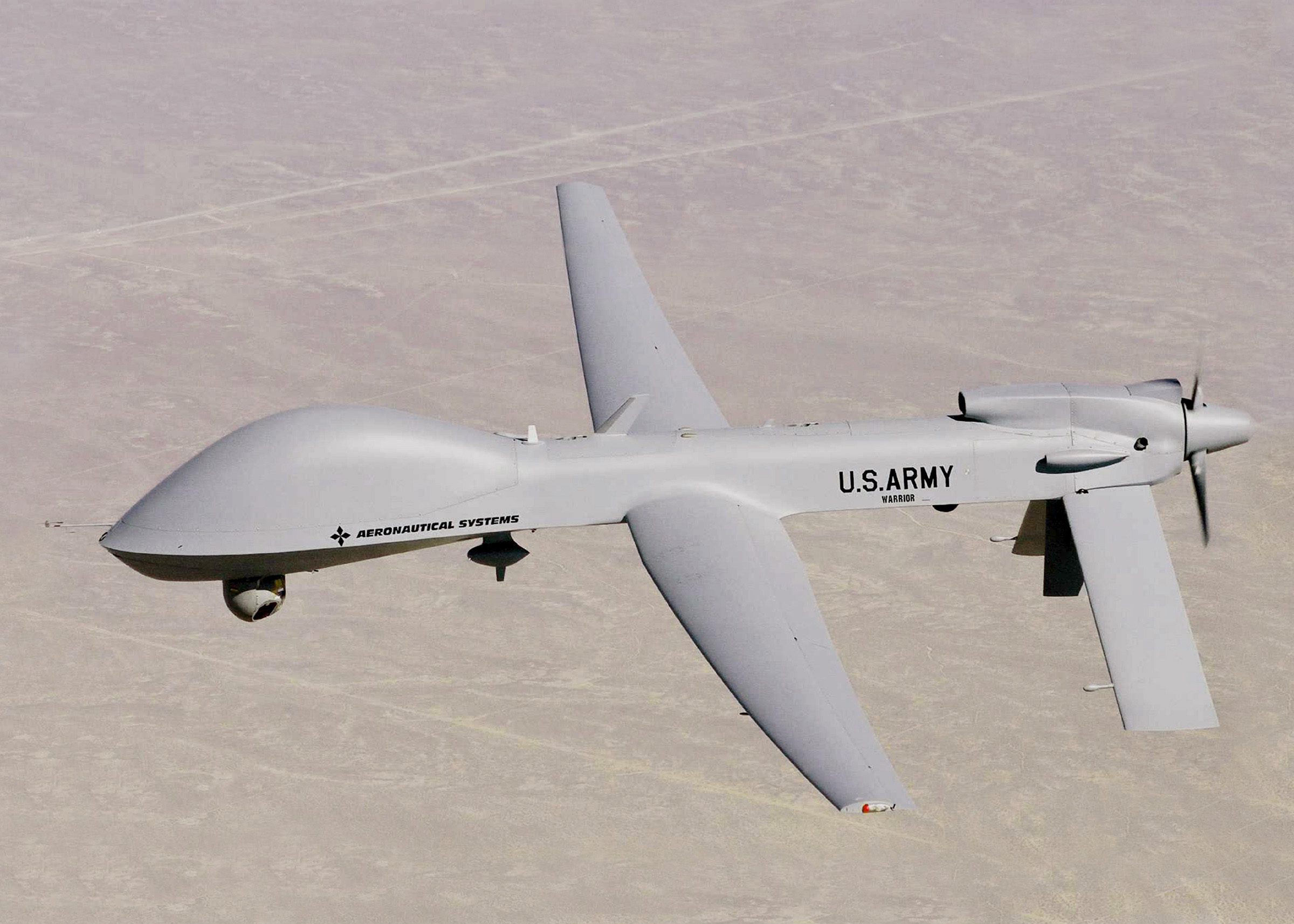
The initial form of MQ-1C has a total length of 8 m, with a wingspan of 17 m and a height of 2.10 m. It weighs around 1,450 kg without armaments and up to 1,635 kg with armaments. Moreover, the Gray Eagle can reach a top speed of 250 kph while flying at a cruise speed of 185 kph.
22. Northrop Grumman MQ-8 “Fire Scout” (2009)
Unlike the other UAVs on this list, the MQ-8 “Fire Scout” is the only helicopter-like aircraft that depicts the US Navy’s ambition for a future resupply fleet. Though it still has a typical ISR system to detect enemy movement, its primary selling point is its ability to carry and deliver supplies unmanned. The Fire Scout concept arose from the need to replace the aging and departing USN’s RQ-2 Pioneer at the time.
Because they primarily operate far offshore, the Navy required a UAV with a range of at least 125 miles, a time endurance of up to 3 hours, and a payload of around 200 pounds. They also stipulated that it should be capable of launching and retrieving items at sea from the decks of its existing surface vessels. Thus, the MQ-8.
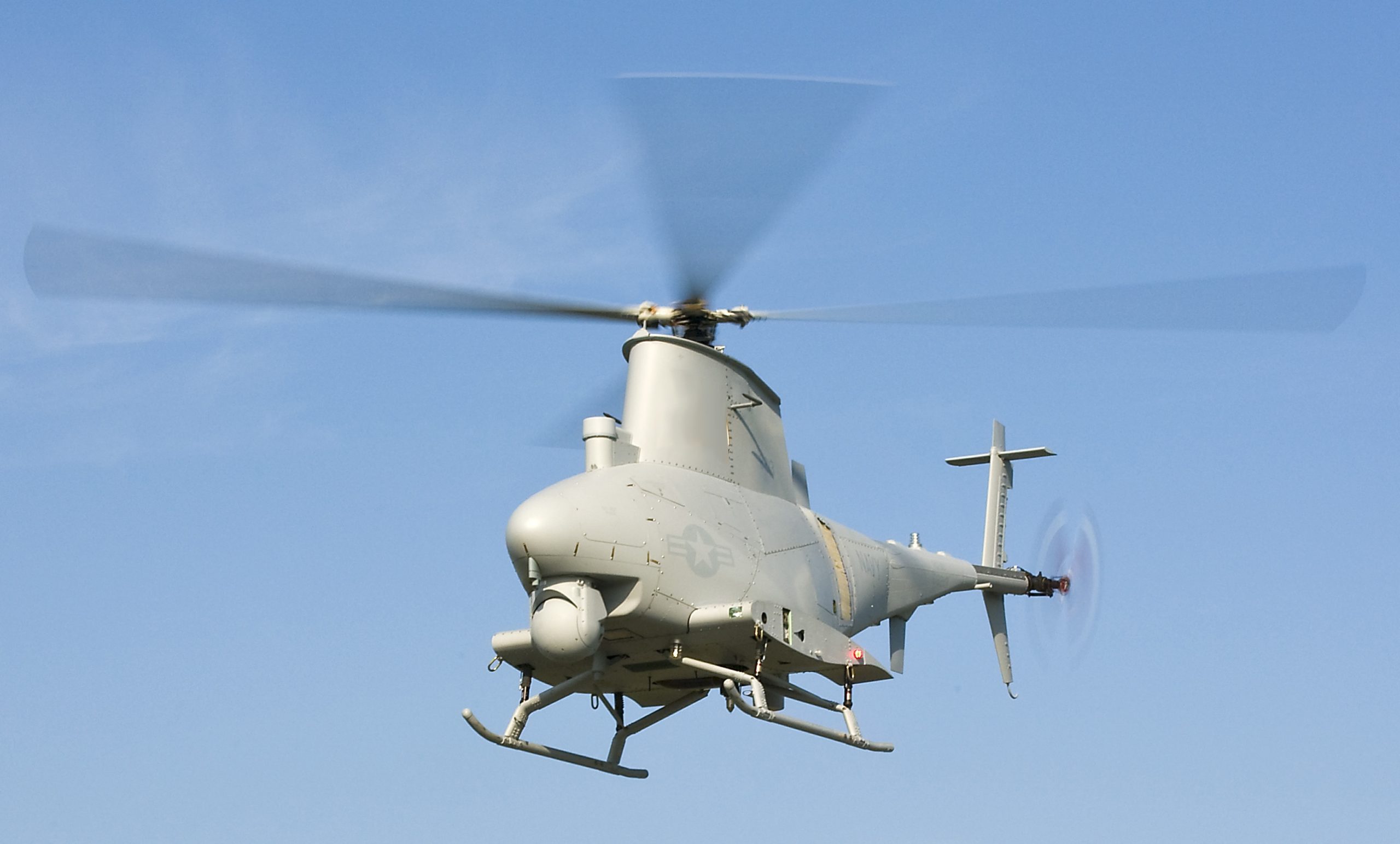
Although promising, it did not prove to be the answer to the USN’s needs. The US Army took over the project and made modifications, evolving it to “RQ-8B” in 2003, which would be renamed the “MQ-8B” three years later. The US Navy has expressed renewed interest in the Fire Scout after it improved over the years, which they have renamed the “Sea Scout.”
The USN’s new Sea Scout made its maiden flight in September 2009 aboard the USS McInerney (FFG-8) frigate. Among its successful missions are the drug-trafficking interception in the Pacific and its participation during the Libyan Civil War in 2011 as a reconnaissance scout.
It measures 7.30 m in length, 8.40 m in wingspan, and 2.90 m in height. Its engine is a unique Rolls-Royce 250-C20 that produces up to 420 horsepower and has a top speed of 213 kph and a range of 1,500 km.
Source: Military Factory

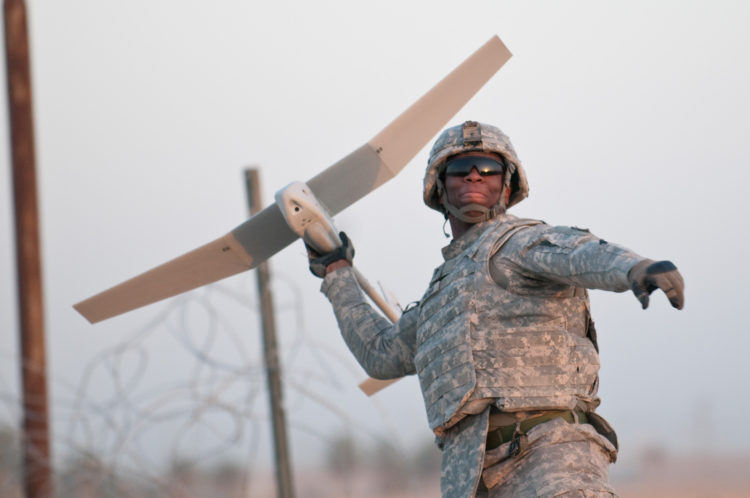








COMMENTS
You must become a subscriber or login to view or post comments on this article.